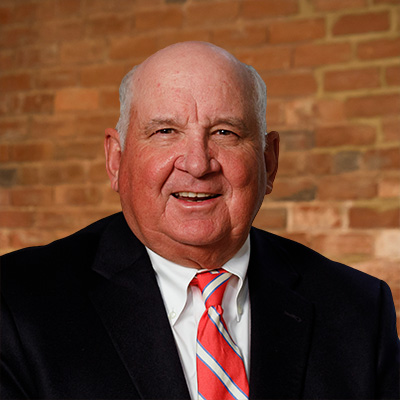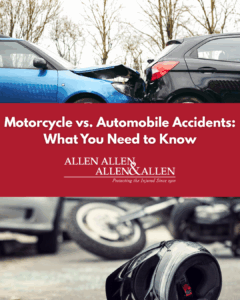
Whether you prefer the comfort and safety of a passenger vehicle or the open-air thrill of a motorcycle, being involved in a collision can be a traumatic and disorienting experience. The nature of the vehicle you are operating at the time of the incident can significantly influence the severity of the injuries sustained, the aftermath of the accident, and the legal or insurance-related consequences. Understanding the critical differences between motorcycle and automobile crashes can help you better prepare, protect yourself, and make informed decisions both before and after a collision.
Limited protection on the road for motorcyclists and the importance of protective gear
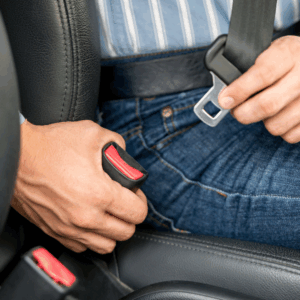 One of the most significant differences between riding a motorcycle and driving a car is the level of physical protection provided by each type of vehicle. Automobiles offer a structural frame, airbags, seatbelts, and other safety mechanisms designed to reduce the impact of a collision. In the event of an accident, these features can significantly reduce the risk of serious injury or fatality.
One of the most significant differences between riding a motorcycle and driving a car is the level of physical protection provided by each type of vehicle. Automobiles offer a structural frame, airbags, seatbelts, and other safety mechanisms designed to reduce the impact of a collision. In the event of an accident, these features can significantly reduce the risk of serious injury or fatality.
In contrast, motorcycles lack these built-in safety components. Riders are exposed to direct contact with other vehicles, the pavement, and environmental hazards. As a result, motorcyclists are far more vulnerable to injury in the event of a crash, even at relatively low speeds. This heightened risk makes the use of appropriate protective gear not only advisable but essential.
Motorcyclists should always wear a helmet, protective gloves, reinforced jackets and pants, and over-the-ankle boots. These items are specifically designed to reduce the severity of injuries. High-visibility clothing and gear with reflective materials can also increase a rider’s visibility to other motorists, reducing the likelihood of being involved in an accident.
In the event of a motorcycle crash, it is critical to assess your condition and that of any passengers or other individuals involved. Even if you do not immediately feel pain or observe visible injuries, you may still be experiencing the effects of trauma. The body’s natural adrenaline response can mask symptoms of more serious internal injuries. It is generally recommended to leave your protective gear on until first responders arrive, as removing it beforehand could worsen injuries that you may not be aware of yet.
Speed and maneuverability in a motorcycle
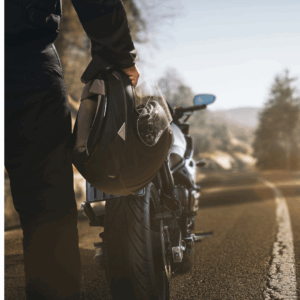 Motorcycles are well known for their speed and agility. Many riders are drawn to motorcycles because of the sense of freedom they offer and their ability to maneuver quickly around obstacles. This maneuverability can, in some cases, allow motorcyclists to avoid collisions that might be unavoidable for a car or truck driver.
Motorcycles are well known for their speed and agility. Many riders are drawn to motorcycles because of the sense of freedom they offer and their ability to maneuver quickly around obstacles. This maneuverability can, in some cases, allow motorcyclists to avoid collisions that might be unavoidable for a car or truck driver.
However, the advantages of speed and flexibility can also become concerns. High-speed riding reduces the reaction time available to avoid hazards and increases the force of impact in a crash. These factors can be amplified when considering split-second decision making under pressure–especially in complex traffic situations or inclement weather. It’s important to be aware of the drawbacks and limitations riding can create.
Reduced visibility and the consequences for motorcyclists
A motorcycle’s speed and distance can be difficult for automobile drivers to judge. Due to their smaller size and unique movement dynamics, motorcycles can appear farther away and slower than they actually are. Unlike larger vehicles, motorcycles close gaps more quickly and may be harder to track for an automobile driver. For this reason, it is critical for automobile drivers to take extra caution when assessing the speed and position of a motorcycle they are sharing the road with, allowing more time and space for them to pass or approach intersections safely.
Due to their smaller size and narrower profile, motorcycles are inherently less visible on the road compared to larger vehicles. Other drivers may fail to notice a motorcycle in their blind spot, especially when changing lanes or making turns. Due to this increased vulnerability, motorcyclists should always drive defensively. This includes maintaining a safe following distance and positioning themselves where they are most likely to be seen, avoiding the blind spots of other vehicles on the road.
Motorists, for their part, must develop greater awareness of the presence of motorcycles and make a conscious effort to double-check blind spots and mirrors before executing any maneuvers. The slogan “Look Twice, Save a Life” is a simple but powerful reminder that extra caution can prevent tragedy.
Insurance considerations: motorcycle vs. automobile coverage
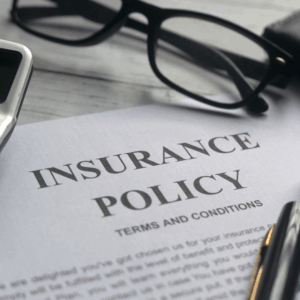 Another key difference between motorcycles and cars lies in the way insurance coverage is structured and applied. While both require liability insurance, the scope and limitations of motorcycle insurance policies can differ significantly from standard automobile coverage.
Another key difference between motorcycles and cars lies in the way insurance coverage is structured and applied. While both require liability insurance, the scope and limitations of motorcycle insurance policies can differ significantly from standard automobile coverage.
Riders must review their insurance policies thoroughly and speak with their agents to ensure they have sufficient protection. In the event of a crash, inadequate insurance coverage can lead to significant out-of-pocket expenses, including medical bills, motorcycle repairs, and legal fees. On the other hand, having comprehensive coverage tailored specifically to motorcycle risks can provide peace of mind and financial security.
What if I’ve been in a motorcycle accident?
It is crucial to prioritize safety and seek medical attention. Move to safety if possible. If you can do so without causing further injury, move yourself and your motorcycle off of the roadway and away from traffic to a safe location.
If possible it is important to collect information and document the scene. This includes filing a police report and collecting relevant information from other drivers and witnesses. It’s important to collect contact and insurance information (name, phone number, address, license number, insurance details) from any other drivers involved and the contact information for any potential witnesses.
Note the date, time, and weather conditions. Take note of any cameras on businesses or light poles. If you are able, inquire with the owner or occupant of the business if their camera captured the crash. Ask that they preserve the video. If you are unable, have a friend or spouse make those inquiries for you. This camera footage is usually only kept for a few days. Many cases are won because of the camera footage.
How can Allen & Allen help me?
If you’ve been in a collision, it’s highly recommended to seek legal advice from an experienced attorney as soon as possible. The attorneys at Allen and Allen have extensive motorcycle crash litigation and trial experience.
Protect Your Rights: An attorney can handle communication with insurance companies, gather additional evidence, and fight to ensure you receive the compensation you may deserve.
Understanding the Legal Process: Your attorney can guide you through the process, including filing an insurance claim, negotiating a fair settlement, or pursuing a lawsuit if necessary.
Be Aware of Time Limits: Be mindful of the applicable statutes of limitations for filing personal injury claims, as missing these deadlines could result in losing your right to seek compensation.
By following these steps, you can help protect your rights, your health, and your potential claim after a motorcycle crash. We’re ready to listen and help as you focus on feeling better. Call 866-703-1973 today to discuss your situation.



